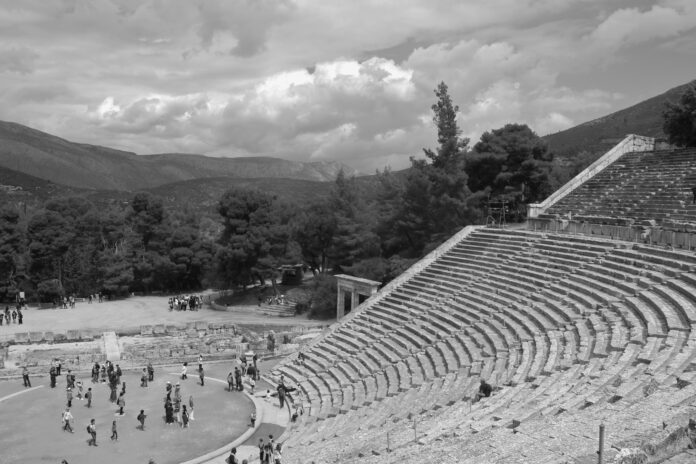Lyrical expression has been an integral part of human culture for centuries. It is a form of artistic communication that combines the power of words with the beauty of music, creating a harmonious blend that resonates with the deepest emotions within us. Lyrical compositions have the ability to transport us to different worlds, evoke strong emotions, and provide a means of storytelling that captivates our hearts and minds. In this comprehensive exploration of the concept of “lyrical,” we will delve into its definition, historical significance, various forms and genres, and the ways in which it has shaped our cultural landscape.
Lyrical, at its core, refers to anything related to or characteristic of lyrics, which are the words that accompany a song or musical composition. The term “lyrical” encompasses not only the poetic and musical elements but also the emotional and expressive qualities inherent in the lyrics themselves. Lyrical compositions have the power to touch our souls, painting vivid pictures in our minds and creating lasting impressions. They allow us to connect with the artists’ experiences, thoughts, and feelings, often providing a cathartic outlet for our own emotions.
The origins of lyrical expression can be traced back to ancient times when oral traditions were the primary means of storytelling. The use of words, rhythm, and melody was a fundamental aspect of these early forms of communication. Lyrical elements can be found in ancient Greek poetry, which often incorporated musical accompaniment to enhance the emotional impact of the verses. Over time, this interplay between words and music evolved, giving birth to various musical genres and poetic forms that embraced the lyrical essence.
One of the most prominent examples of lyrical expression is found in the realm of songwriting. Songs have the unique ability to capture and convey a wide range of emotions through carefully crafted lyrics. Whether it’s a heartfelt ballad, an upbeat pop anthem, or a soulful jazz tune, the lyrical content serves as the soul of the song, lending depth and meaning to the melodies and harmonies. The lyrics often narrate personal experiences, explore universal themes, or tell captivating stories that resonate with listeners on a profound level.
Beyond the realm of music, lyrical expression can be found in various other art forms as well. Poetry, for instance, is a literary genre that embraces the lyrical essence. Poems employ rhythm, meter, and vivid imagery to evoke emotions and convey complex ideas in a condensed and impactful manner. From sonnets to haikus, from epic narratives to confessional verses, poetry showcases the versatility and power of lyrical expression. Similarly, in theater and film, lyrical elements can be found in dialogue, monologues, and soliloquies, enriching the narrative and providing a heightened sense of emotional depth.
Lyrical expression is not confined to a specific genre or style. It has transcended cultural boundaries and evolved alongside the ever-changing artistic landscape. In the realm of music, various genres embrace lyrical elements, each with its own distinct characteristics. From the poetic and introspective lyrics of folk music to the socially conscious messages in hip-hop, from the narrative storytelling of country music to the emotional outpourings of soul and R&B, lyrical expression manifests in diverse ways, reflecting the multitude of human experiences and perspectives.
In addition to the musical and literary realms, lyrical expression has also found a home in visual arts. Paintings, sculptures, and other forms of visual art often evoke a sense of lyrical beauty and harmony. The brushstrokes, the composition, and the overall aesthetic can create an atmosphere that resonates with the lyrical essence, transporting the viewer into a world of emotions and sensations. Similarly, in dance and choreography, movements can be imbued with a lyrical quality, gracefully expressing the emotions and narratives within the music or the accompanying lyrics. The fluidity and expressive nature of dance allow the body to become a vessel for lyrical storytelling, conveying a range of emotions and narratives without the need for words.
Lyrical expression has undoubtedly left an indelible mark on our cultural landscape. It has the power to shape societal conversations, ignite revolutions, and inspire change. Throughout history, lyrical compositions have been used as vehicles for social commentary, political activism, and personal introspection. Artists have used the power of lyrics to shed light on pressing social issues, challenge the status quo, and give voice to the marginalized and oppressed. From Bob Dylan’s iconic protest songs to Nina Simone’s soul-stirring anthems for civil rights, lyrical expression has played a vital role in sparking movements and fostering collective consciousness.
The significance of lyrical expression goes beyond its ability to entertain and captivate. It has a profound impact on our emotional well-being and provides a means of introspection and self-expression. Many individuals find solace and comfort in lyrical compositions, as they offer a relatable and cathartic outlet for their own experiences and emotions. Lyrical expression has the power to heal, console, and inspire, acting as a medium through which we can make sense of the complexities of life and connect with others on a deeply human level.
In conclusion, lyrical expression encompasses the poetic, musical, emotional, and expressive elements that bring words to life. It has a rich history that dates back to ancient times, evolving alongside various art forms and genres. Whether in music, poetry, theater, visual arts, or dance, lyrical expression has the capacity to touch our hearts, stimulate our minds, and foster a deeper understanding of the human experience. Its influence extends beyond mere entertainment, shaping our cultural conversations and serving as a powerful tool for social change. Lyrical expression is a testament to the power of words and music, intertwining to create an artistic tapestry that resonates with our souls.


















